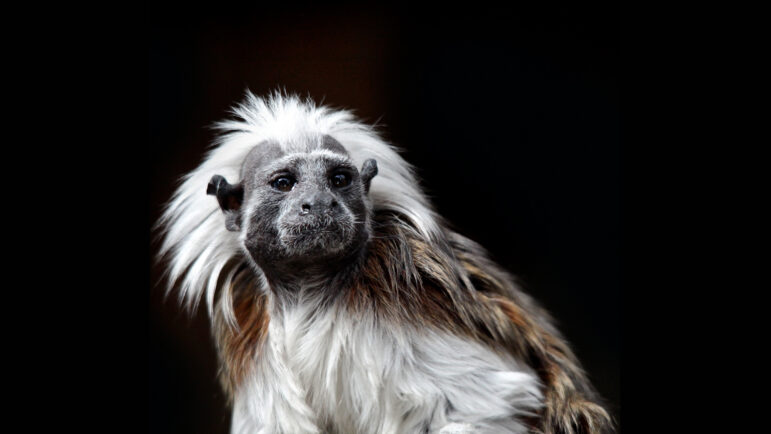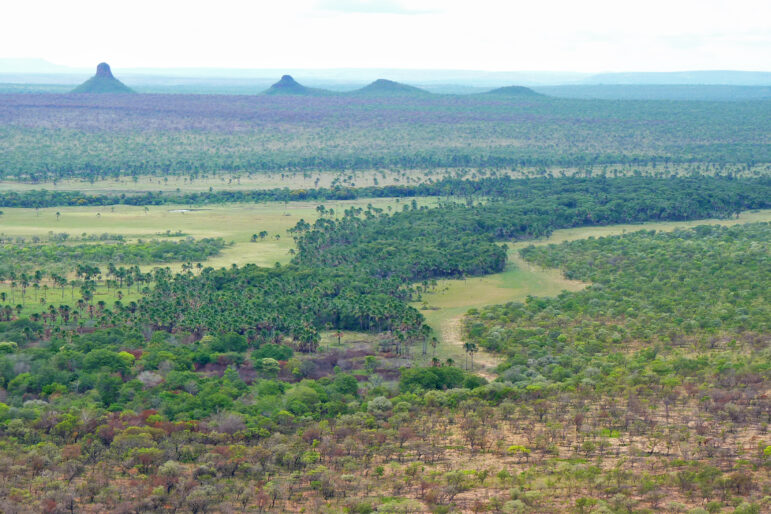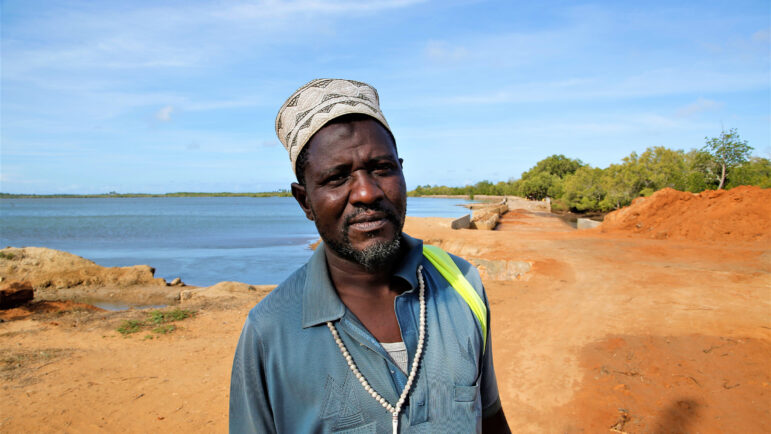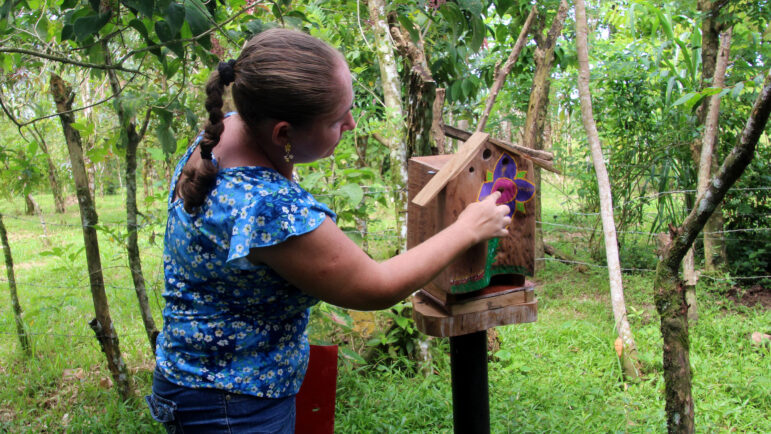In an era where environmental crises are inundating, the role of independent journalism to ensure access to timely, accurate and objective information is more important than ever. As a leading voice in environmental science and conservation news, Mongabay is committed to shedding light on underreported issues and driving tangible outcomes.
Through quality reporting and compelling storytelling, the news produced by Mongabay has a track record of informing decision making and inspiring action. In this article, we exemplify how independent journalism can lead to more resources flowing into conservation.
Crowdfunding to save a rare Colombian monkey

Native to Colombia’s Caribbean region, cotton-top tamarins live in semiarid lowlands and mangrove forests. Image by Fabio Gismondi via Flickr (CC BY-NC-SA 2.0).
In July 2023, Mongabay published a report that explained how the nonprofit Fundación Proyecto Tití has conserved some 5,100 hectares (12,600 acres) of forest in Colombia, helping to reconnect forest fragments and secure more habitat for the critically endangered cotton-top tamarin.
To combat deforestation and fragmentation, the project aimed to buy an additional 386 hectares (954 acres) with the help of ReWorld, a fully volunteer-run organization that has committed to raising $1.2 million for Proyecto Tití. Researchers say restoration initiatives can help conserve and manage ecosystems by controlling fragmentation and the expansion of deforestation.
“This story was important because it provided details about a unique partnership between two very different nonprofits leveraging their respective skills to meet a common goal,” said Mongabay staff writer Aimee Gabay. “Before this, I hadn’t heard about many boots-on-the-ground nonprofits working with a team of Silicon Valley-based volunteers, so I was keen to explore this relationship.”
Impact
After the article was published, a reader contacted Mongabay to share that she used the article to make a funding decision. She had received a donation request to help Fundación Proyecto Tití in Colombia buy rainforest land to expand their protection of endangered monkeys. Wanting to verify and evaluate the project’s legitimacy, she read the Mongabay article about the nonprofit’s conservation efforts, which gave her confidence in the project and donation request. She shared: “[I] really appreciate the solid and accessible reporting by Mongabay on issues like this one. Glad you guys are doing this work!”
In Brazil, scientists fight an uphill battle to restore the disappearing Cerrado savanna

The prospect of an end to the program monitoring Brazil’s Cerrado savanna, blamed on lack of funding, has drawn an outcry from scientists, civil society groups and the soy industry. Image courtesy of Luiz Flamarion Barbosa de Oliveira/Federal University of Rio Grande do Sul.
In April 2023, Mongabay published an article about the challenges of preserving savannas, which globally receive less attention and funding than forested biomes such as the Amazon Rainforest. The article focuses on Brazil’s Cerrado, a biome that has been largely seen as a wasteland, despite its rich biodiversity, its vast capacity to act as a carbon sink, and its role in feeding some of Brazil’s critical watersheds.
In the last 30 years, more than half of the Cerrado has been cleared for cattle pasture, soy, eucalyptus and sugarcane, while in 2022, deforestation rose by more than 20%, with scientists predicting that the biome could disappear in less than three decades. But Brazil has committed to restore 12 million hectares (30 million acres) of native vegetation by 2030, of which 2.1 million hectares (5.2 million acres) are in the Cerrado. The article focuses on researchers’ efforts to better understand the Cerrado’s ecology and biodiversity, on their restoration work and their advocacy for national conservation policies for the biome. It also draws attention to the need to reframe what restoration means in a savanna and for the importance of pastures – which are increasingly targeted for industrial agriculture – in regenerating the land. Currently, about 12,000 hectares of the Cerrado are under some form of restoration, far behind Brazil’s ambitions.
“With so much coverage out there focusing on the Amazon, this story brought into view a critical, yet neglected biome, which plays a massive role in mitigating climate change and deserves more attention from research and policymakers,” said English editor for Latin America Alexandra Popescu. “The reporting on the ground provided valuable insights into the various types of restoration efforts happening across Brazil’s Cerrado and a reminder about the ecological importance of savannas worldwide.”
Impact
After the article was published, the Walden investment fund, which invests in natural capital, reached out to one of the article’s sources to explore opportunities for collaborating on restoration projects in the Cerrado.
As their land and water turns saline, Kenyan communities take on salt firms

Hafidh Wanje stands near a creek where the fishermen he buys from fish. The creek also serves as the inlet where Malindi Salt Works captures seawater and channels it to dikes for concentration. Image by Anthony Langat for Mongabay.
Between 1977 and the 1990s, the Kenyan government allocated thousands of hectares of land to salt mining companies along the country’s north coast, Mongabay shared in an article in August 2022.
People had been living on that land for generations, despite its being officially gazetted as public land by the government. Following the allocation of land, local people complained of harassment and violent evictions by the salt companies, as well as soil and waters rendered too salty to farm, drink, or fish.
In 2020, groups representing these communities filed a lawsuit against the companies and the Kenyan government with the aim of providing recourse for loss of land and livelihoods and damage to the environment. The case was due before a judge in October 2022.
“Mongabay reporter Anthony Langat went where few media outlets go for this story, to bring to light the experiences of rural people living on the frontline where nature is giving way to industry,” said senior editor Rebecca Kessler.
Impact
Mongabay’s coverage of this article inspired action by a fundraising organization called Ekō (formally SumOfUs). After reading about the situation, Ekō contacted the Mongabay contributor, asking for an introduction to the Malindi Rights Forum, the organization working against the salt companies.
For a beekeeping couple in Costa Rica, pesticides are killing the buzz

Melipona beekeeper Andrea Mora Montero in her garden in Iztarú, Costa Rica, where her family has 50 hives that are home to seven different species of the Melipona stingless bee that are native to Central America. Photo by Monica Pelliccia for Mongabay.
Similarly, another Mongabay article (English version) by Mongabay’s Spanish-language news bureau, Mongabay Latam, covered a couple in Costa Rica who are leading a conservation project to breed endangered Melipona bees amidst the rise of pineapple, African palm and cassava monocultures and the increasing use of pesticides.
When these crops are sprayed with pesticides, the couple’s bees often die. One of their main concerns was that the airborne toxins may also affect the health of their children. As a result, the beekeepers initiated legal proceedings to save these native pollinators in Costa Rica that, despite its environmentally friendly reputation, has one of the highest rates of pesticide use in the world.
“Reporter Monica Pelliccia is one of Mongabay’s most intrepid and versatile freelance contributors. In this case, she once again found a compelling issue and told the peoples’ story at its center with compassion and accuracy, then illustrated it with top notch images,” said Mongabay impact editor Erik Hoffner.
Impact
This article inspired an Ekō campaign, which provided the farmers with $4,500 for equipment for higher, stronger fences, security cameras, as well as providing legal support to the family to challenge regulations that allow chemical spraying near their land.
Thanks to Mongabay’s approach to journalism, which is founded in transparency and objectivity, we are able to generate real-world impacts, like the one discussed in this article.
Conclusion
Mongabay’s commitment to objective reporting illuminates the critical issues facing our environment. As highlighted here, independent journalism can educate, help hold decision-makers accountable and empower stakeholders, including funders and philanthropists, with actionable insights. The stories of collaboration, challenge and success can inspire confidence in potential donors, demonstrating the power of informed journalism to effect real-world change.
Support independent environmental journalism
If you are interested in helping sustain independent news, there are two excellent ways you can do so with Mongabay. First, consider making a donation, which directly helps us continue to produce high-impact journalism from Nature’s frontline. Second, subscribe to Mongabay’s newsletter to get the latest environmental news delivered right to your inbox.
About Mongabay
Mongabay is a nonprofit environmental science and conservation news platform focused on providing cutting-edge independent journalism from Nature’s frontline. We pride ourselves on producing reporting that has substantial, tangible impacts around the world.